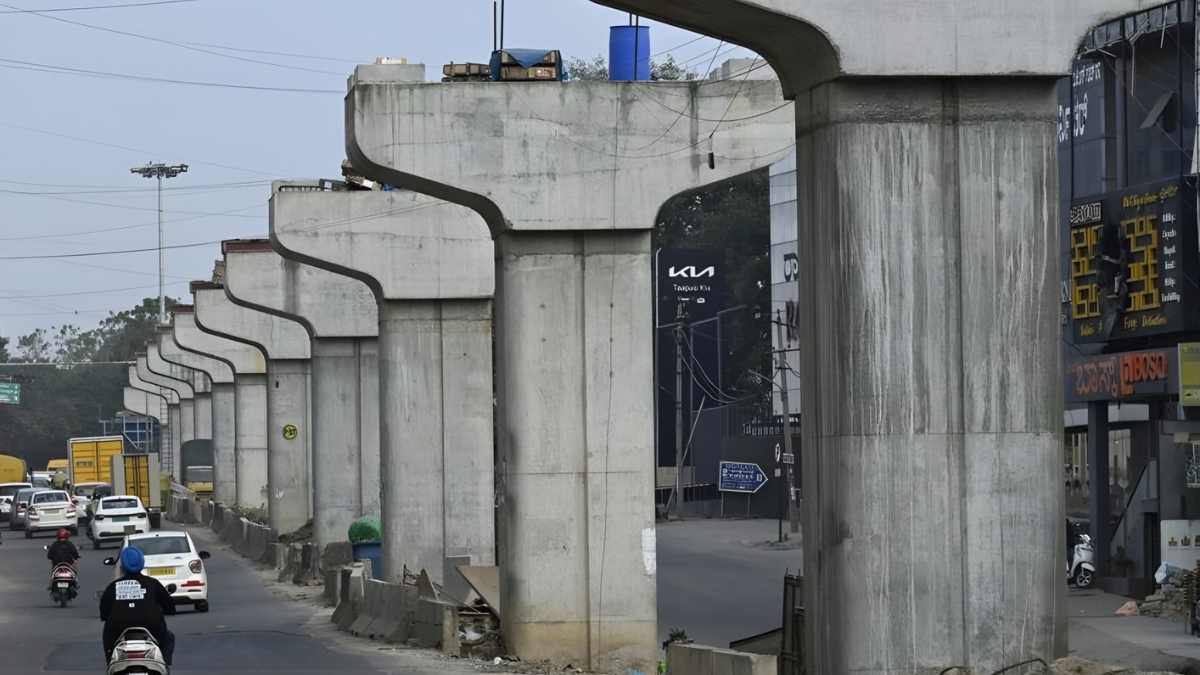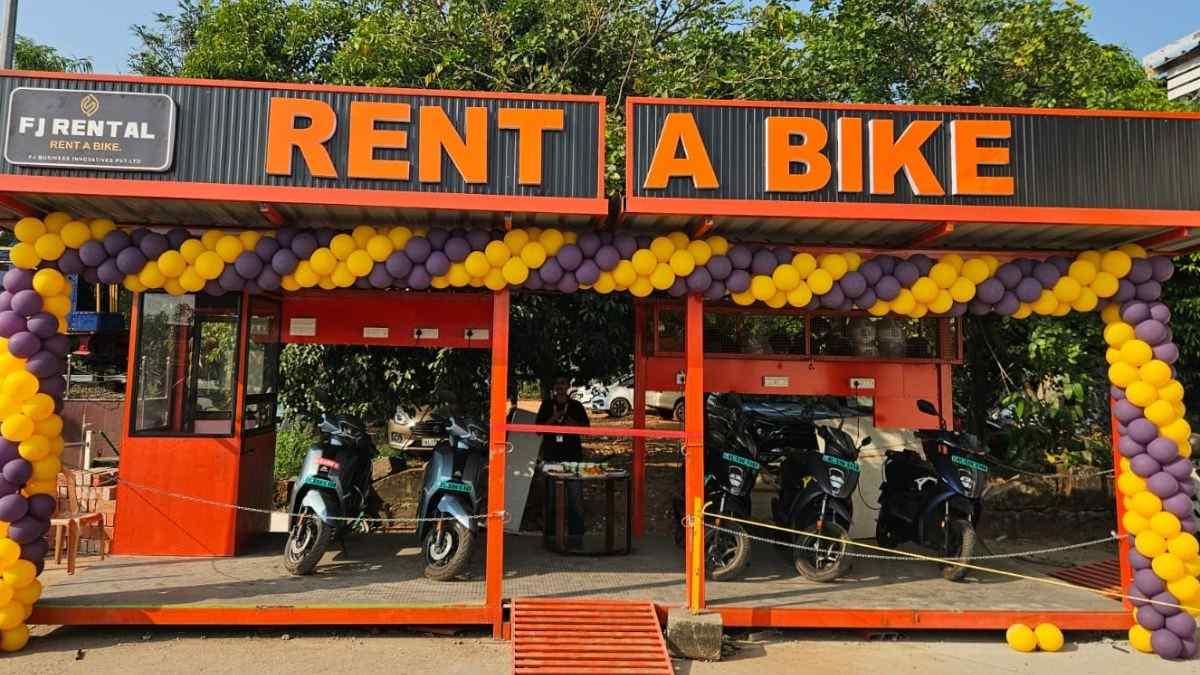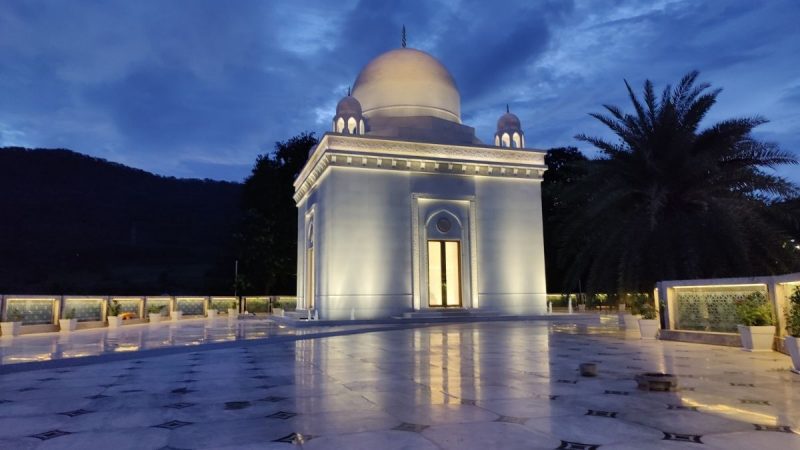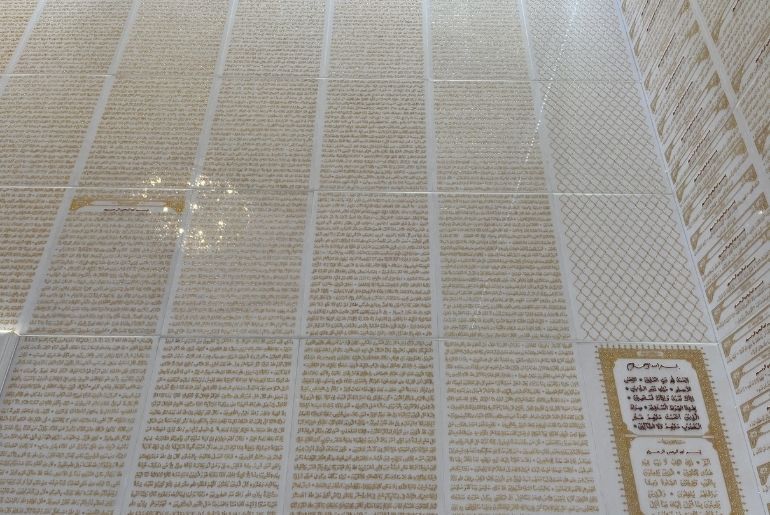On a pleasant Saturday evening, almost at the golden hour, I walked into Thane’s newest monument that has opened its doors to the public to bask in its serenity and know more about its cultural history. Mazaar-e-Qutbi is located at Pokhran Road, near Thane’s bustling Upvan Lake, and catches the fancy of passers-by. Especially when it is lit beautifully come dusk.
The picturesque setting around the complex – of scenic Yeoor Hills against the backdrop and being adjacent to the entrance of Sanjay Gandhi National Park – is just the cherry on the top or more like saffron strand on the lachka (wholewheat halwa). Yes, that is a Bohra cuisine reference! Because, the place I visited is a prominent one for Bohras, a faction of the community.
A Guided Tour That Delves Into The History Of Dawoodi Bohra Community And Mazaar-e-Qutbi
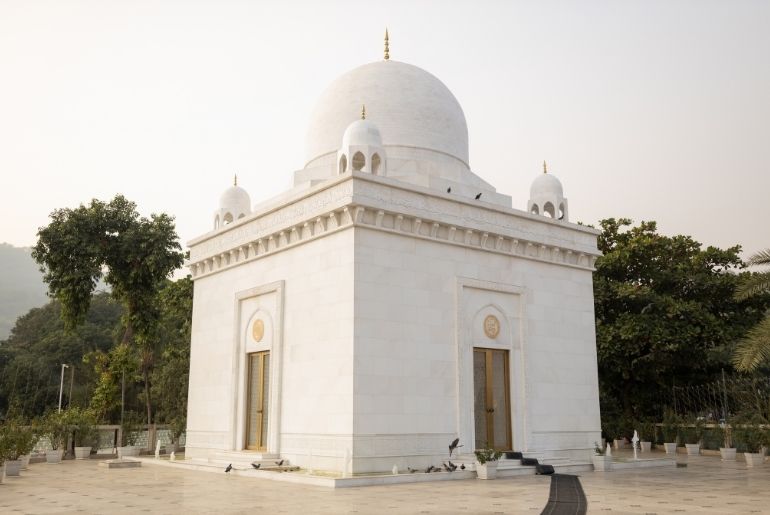
Opening its doors, for the first time to people of any faith, a faction of the Bohra community of Thane welcomes everyone for a free guided tour. I was given an exclusive tour by the very knowledgeable Shabbir Bhaigora, who came all the way just for me.
The whole complex is called Mazaar-e-Qutbi; and it houses a mausoleum Raudat-un-Noor, a community hall Iwan Complex, and a social welfare centre. Raudat-un-Noor, which is located inside, is the mausoleum (dargah) of the Khuzaima Qutbuddin. The monument is commissioned by the Taher Fakhruddin, who is also his son.
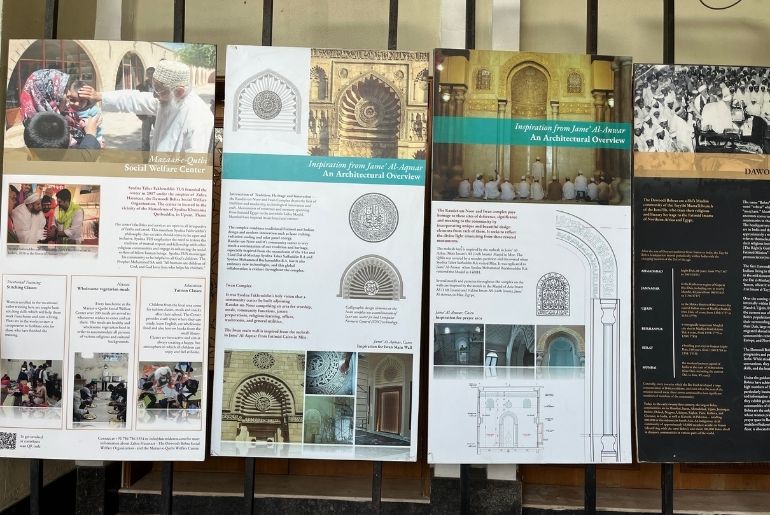
Just as you enter, you are taken to the courtyard area that has pictorial fixtures detailing the brief history of the Bohra community and their origins. It has information pertaining to the complex, the history of Syednas and why this mausoleum was built. Shabbir ji painted a pleasant picture of the past and talked about how Bohras got their names, and touched upon the details meticulously.
Also Read: 8 Must-Visit Synagogues In Mumbai
Iwan Complex and Raudat-un-Noor Inside Mazaar-e-Qutbi
Iwan Complex
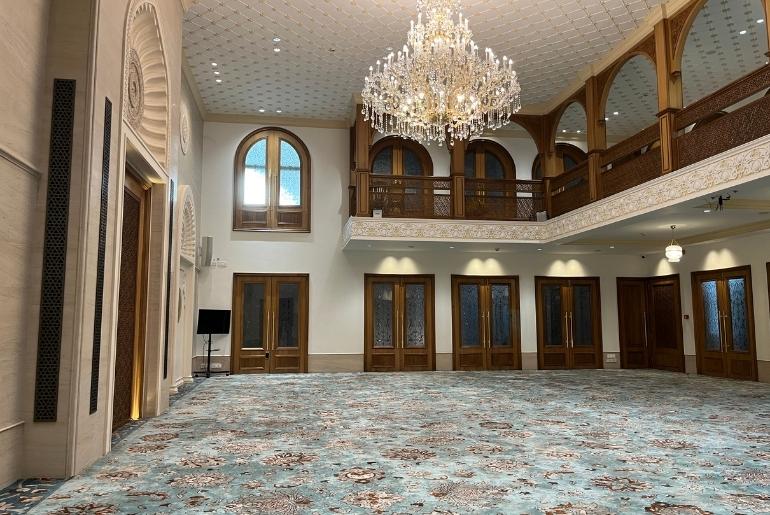
Image Courtesy: Rachna Srivastava
After the briefing, we were taken to the community centre, Iwan Complex, which is a sight to behold. It is a place for prayers and community events. The mehrab (arch on the wall) inside is inspired by the Jami’ al-Aqmar Cairo, Egypt that was built in 1125 CE. The intricate design is extremely beautiful. The chandelier inside features the Czech crystal and is a fine specimen of modern art meets traditional design.
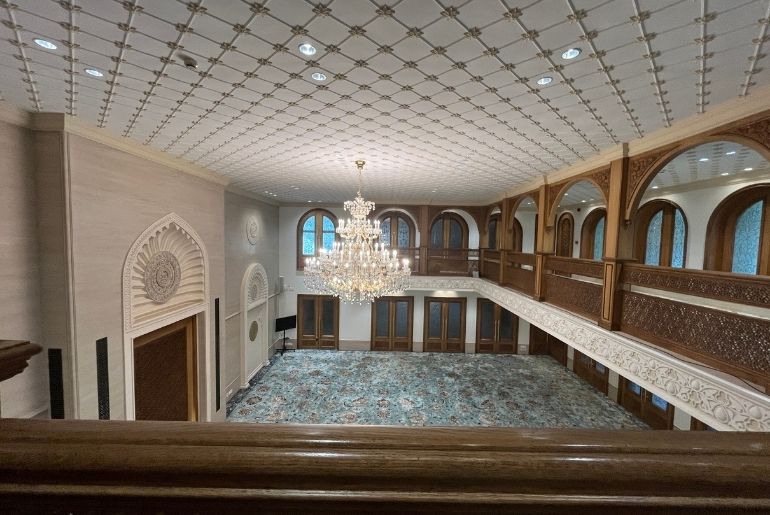
Image Courtesy: Rachna Srivastava
The single-piece, 5000-square-foot carpet-laid inside is handcrafted and made by craftsmen from the city of Mirzapur, Uttar Pradesh. The prayer hall allows men and women to pray together, but has a separate area for women upstairs in a balcony-like structure. The intricate motifs on the ceiling and the walls are better viewed from here. The chandelier looks divine when lit up.
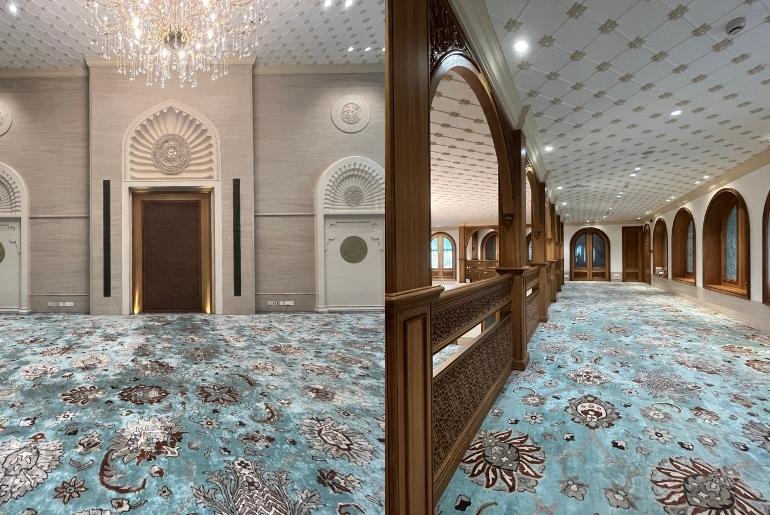
Image Courtesy: Rachna Srivastava
Next, we headed to the terrace where the actual mausoleum (dargah) lies. You can take the stairs, but it can also be reached via a lift straight to the top. I suggest climbing up because then you can admire the artworks, curios and artefacts collected from across various locations and put up on display.
Also Read: For The Love Of Architecture, Visit These 8 Glorious Sites In The World
Raudat-un-Noor
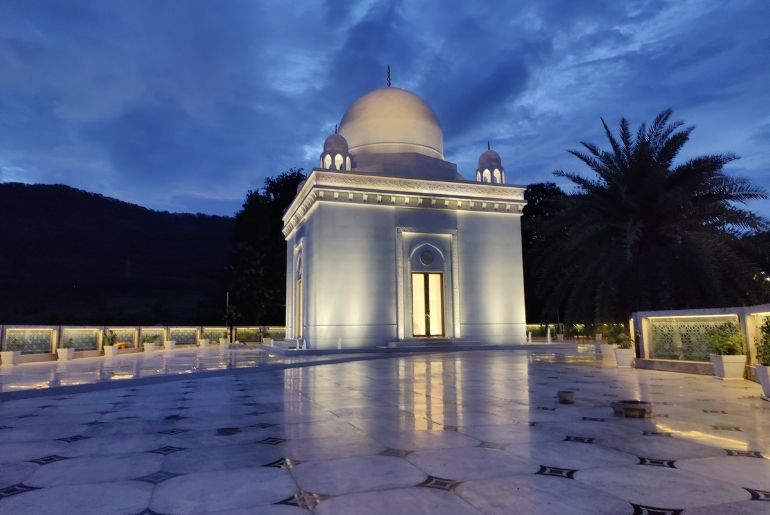
Image Courtesy: Supplied
It is named after the luminous personality of Khuzaima Qutbuddin who was known to be a beacon of divine light (noor). The monument is made with white Makrana marble sourced from Makrana, Rajasthan. This stone (sangemarmar) is known to never turn yellow. In fact, it is also a Global Heritage Stone Resource (recognised by the International Union of Geological Sciences).
The beautiful white structure gleams as it sits on a body of water, The architecture is inspired by Bhendi Bazaar’s Saifee Masjid and you can’t help but marvel at the detailing.
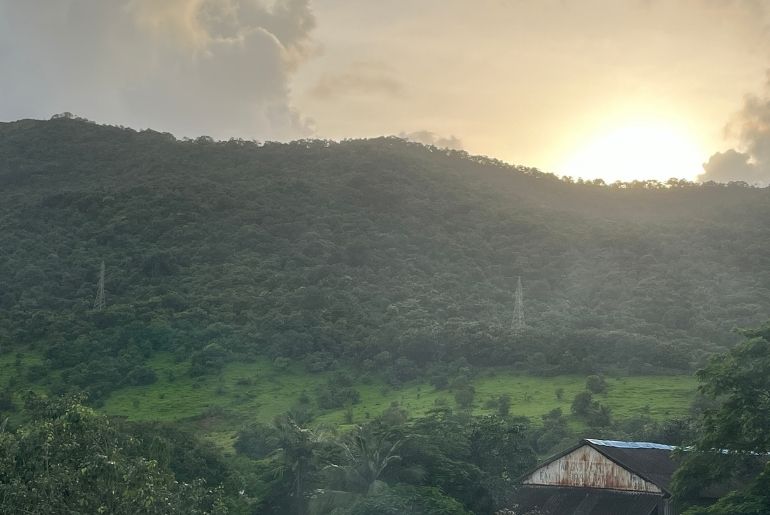
Image Courtesy: Rachna Srivastava
I went around sunset and the rays of the setting sun reflecting off the waterbody and the white marble made the view mesmerising. With Yeoor hills plastered behind it like a dreamy painting, the serenity I felt cannot be summed up in words.
Gold Inscribed Holy Quran On The Four Walls
As soon as you enter the mausoleum, you can see the light shining through its crystal doors and onto the tomb in the centre. As a complete novice in showcasing religious reverence, I closely watched Shabbir Ji offering his prayers. I was intrigued and clueless as to how I could show respect. So, I asked Shabbirji how to pray and whether or not I was allowed to touch the tomb. A non-judgmental Shabbir ji simply told me that I can offer prayers as I please, there is no right or wrong way to show respect.
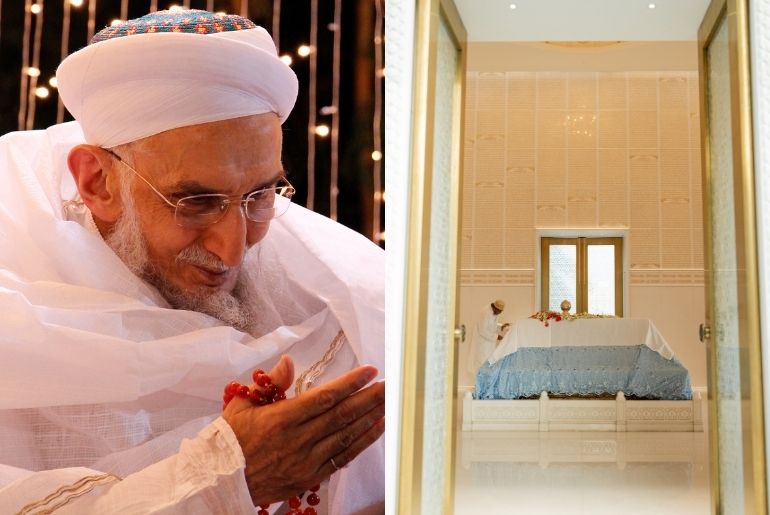
Image Courtesy: Rachna Srivastava
Then, Shabbir Ji went on to explain that the walls are adorned by the Holy Quran, Qur’an Majeed. It is inscribed in pure gold leaf donated by all the women of the community. It is written in the Khat Kufi script – a style of script used for Islamic calligraphy and said to be the first calligraphic script to be used to transcribe the Qur’an.
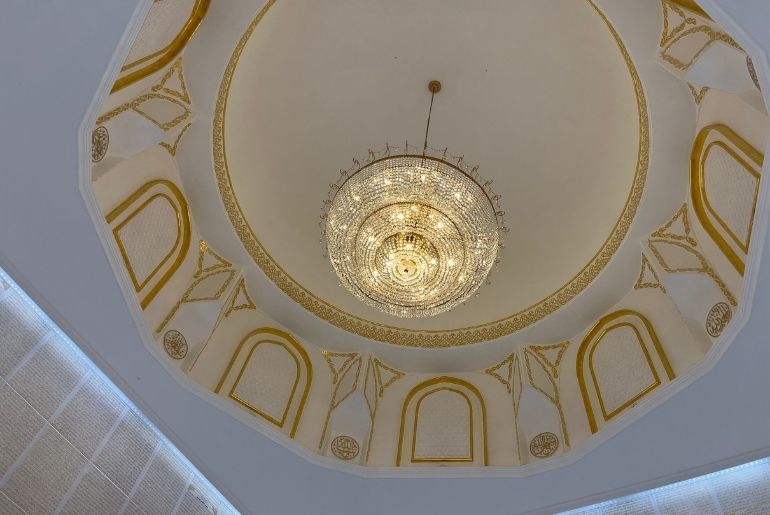
Another Czech crystal chandelier adorns the ceiling with more intricate details on the inside of the hemispherical dome. To shield the marble from dampness and to make the structure weatherproof from the infamous monsoon, the architecture implements cavity walls.
Afterward, Shabbir ji explained more about the tomb, the inscriptions and talked about Taher Fakhruddin. All the while, we admired the greenery of Thane and soaked in the view of the serene surroundings. The aura was very calming and after the tour, Shabbir ji happened to mention many interesting things about the faction of the Bohra community.
Also Read: A Perfect Picnic Spot In Thane With Waterfalls That Is Perfect For The Monsoons
Guided Tours All Are Open To All
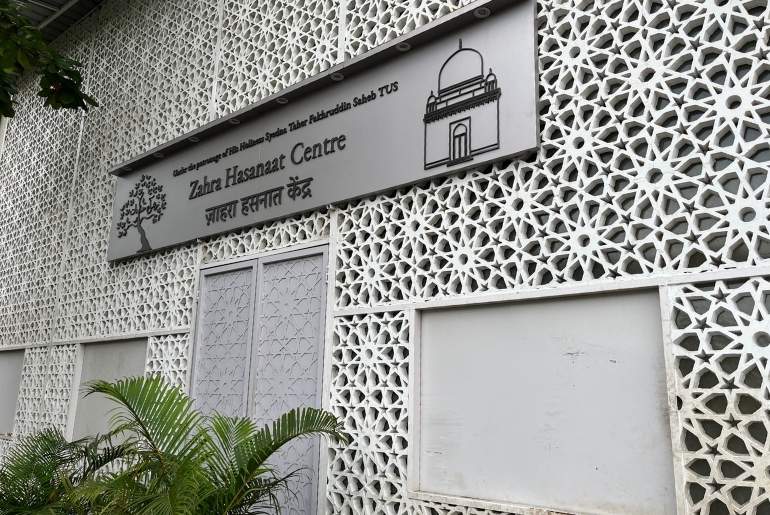
The Dargah tours happen every Sunday. And, anyone can come and learn more about this community and the history of the monument. During the 30-minute tour, you will also learn about the social welfare centre that is next door and their initiatives. For the tour, you have to head to the website to register for free.
I highly recommend this as it is your chance to learn something new about a community that co-exists with us and is welcoming everyone with open arms.
Where: Raudat-un-Noor Pokhran Road, 1, Upvan Lake Rd, Thane West, Maharashtra 400606
When: Only on Sundays; 5 pm | Book here.
Cost: Free
For more such snackable content, interesting discoveries and the latest updates on food, travel and experiences in your city, download the Curly Tales App. Download HERE. First Published: September 12, 2024 6:14 PM


